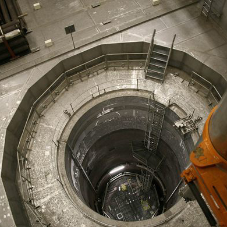In a previous blog, we covered the necessity of High-Speed Rail for cutting down commute times and creating regional equality. That blog explained how HS2 may not really make much of an impact on either of those things for the UK.
However, that doesn’t mean that HS2 is necessarily a waste of time and money. According to a report from Logistics UK, the UK rail network was operating at “close to full capacity”.
One of the issues causing this is the way in which UK rail currently operates. National train services, travelling long distance, are sharing the same tracks as local networks. In many cases, Freight trains are also using the same tracks. This is causing large areas of congestion across the network, such as The Northampton Loop. Logistics UK says:
“The Northampton Loop, where the four-track WCML splits into 2 x 2 track bits from Roade to Rugby, is currently a bottleneck for rail freight, almost running at full capacity. It is unlikely there will be any increase in available capacity over the Northampton Loop, and so moving passenger traffic onto HS2 is the only way to release more capacity on this piece of infrastructure.”
There are many other areas similar to the Northampton Loop, where these congested bottlenecks exist. If the UK had a brand new line of track, dedicated to long distance passenger transport, it would free up a significant amount of space for both local passenger and freight rail.
HS2 could free up space across the current existing network for up to 144 extra freight trains per day. And each train can carry enough freight to take 76 HGVs off the road. Carrying freight by rail is estimated to produce 76% less CO2 than carrying it by road. Meaning that HS2 could be a vital part of future-proofing the UK’s logistics network.
That is not to say that HS2 is the only possible way of increasing rail capacity, but when weighing up all options, it seems like the best way to progress. Due to the current network running at near capacity, any efforts to add track or signals on a more localised level is likely to cause disruption. As stated in the Department of Transport’s HS2 Released Capacity Study:
“Track capacity can be increased by selective infrastructure improvements such as additional tracks, improved signalling and grade separation, but the works can be disruptive and costly. In practice, implementing such improvements is often difficult, given the high levels of utilisation of today’s network.”
Given the already troubled nature of UK rail, laboured with disruptions even before the ongoing strikes, a large-scale renovation project would bring even more pressure onto the busy network.
In the ministerial foreword for The Full Business Case for HS2, Andrew Stephenson, the Minister of State for Transport wrote:
“(HS2) will form the spine of our future transport network”.
That is how HS2 should be thought of, the spine of a modernised rail network that will relieve pressure from the current network.
One thing that The Business Case for HS2 talks about is an increase in demand for long distance passenger trains and the intense pressure this has put on the West Coast Main Line:
“the WCML has seen a period of extraordinary growth and this has continued every year since – despite the economic downturn from 2008. In total, passenger journeys have nearly tripled”.
So, while the first blog looked at the redundancy in building a network capable of delivering high-speed trains, the reports in this blog suggest that new lines are needed. Whether those new lines are high-speed or not, seems to be more of a fringe issue.
Related Blog Articles








